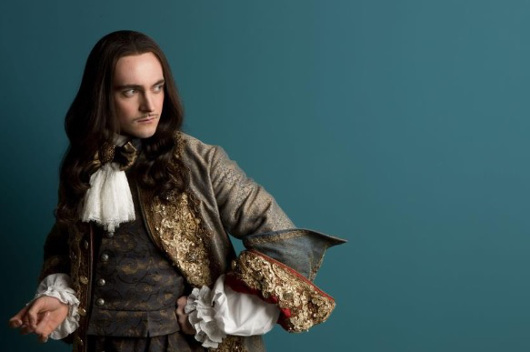Versaille… and St Andrews

To celebrate the 300th anniversary of Louis XIV’s death in 1715, the French television channel Canal Plus commissioned ‘Versailles‘, a ten-part drama on the Sun King and the great palace with which he is most associated. The first episode on BBC2 was transmitted on Wednesday 1 June, after a good deal of advance billing that generated high expectations of lust, violence and intrigue.
In the run-up to the first episode Professor Guy Rowlands (School of History) examined the characters and plot for the Sunday Mail newspaper, and wrote a feature article for The Conversation on the importance the political system of Versailles has for us today. Former St Andrews graduate students, including Dr Sara Barker (now University of Leeds) and Dr Linda Briggs (now University of Manchester), have also acted as historical consultants to the BBC and will appear in the short comment programmes transmitted after each episode.
Versailles, as the drama series makes clear, was a centre for influence trading and political plotting, not just the home of the king. It became the main location for French central government for much of the period between 1682, when the court moved in fully, until the French Revolution just over a century later. The palace not only witnessed spectacular entertainments from time to time, it also saw countless political and social encounters between the kings of France and foreign diplomats and even foreign princes – including James VII and II of Great Britain in exile, and Peter the Great of Russia on an overseas tour. In short, Versailles – not Rome – was the first truly global centre of international politicking.
The Canal Plus series bought by the BBC gives a good idea of the characters at Louis XIV’s court, and the atmosphere in the first half of his reign, but inevitably there has been a certain amount of artistic licence. In particular, many of the personal developments depicted took place several years before the king began to consider improving and expanding the small château into a great palace from the late 1660s. And the sense that Louis embarked on this process to control a politically unreliable nobility is a leap too far. In fact, Louis wanted more courtiers around him so he would not be the prisoner of his government ministers.
Versailles was also very far from being the gilded prison for the nobles that some of Louis XIV’s hostile contemporaries suggested. While leading aristocrats were expected to attend on the king regularly, hundreds of people a year would drop in on business, often to lobby the king’s ministers or to persuade great nobles and members of the royal family to promote their pet schemes and personal interests, or sometimes just to see the king and royals going about their lives. The great palace of Versailles after 1682 was a magnet for up to 9000 people at a time, on top of the 15 to 20,000 people who lived ordinarily in the town. While many more visit and live there now, these figures for Versailles from the time of Louis XIV are almost identical to the numbers of students and permanent inhabitants of St Andrews in 2016.
Image courtesy of the BBC.
Issued by the University of St Andrews Communications Office, contactable on 01334 462530 or [email protected].
Category Public interest stories